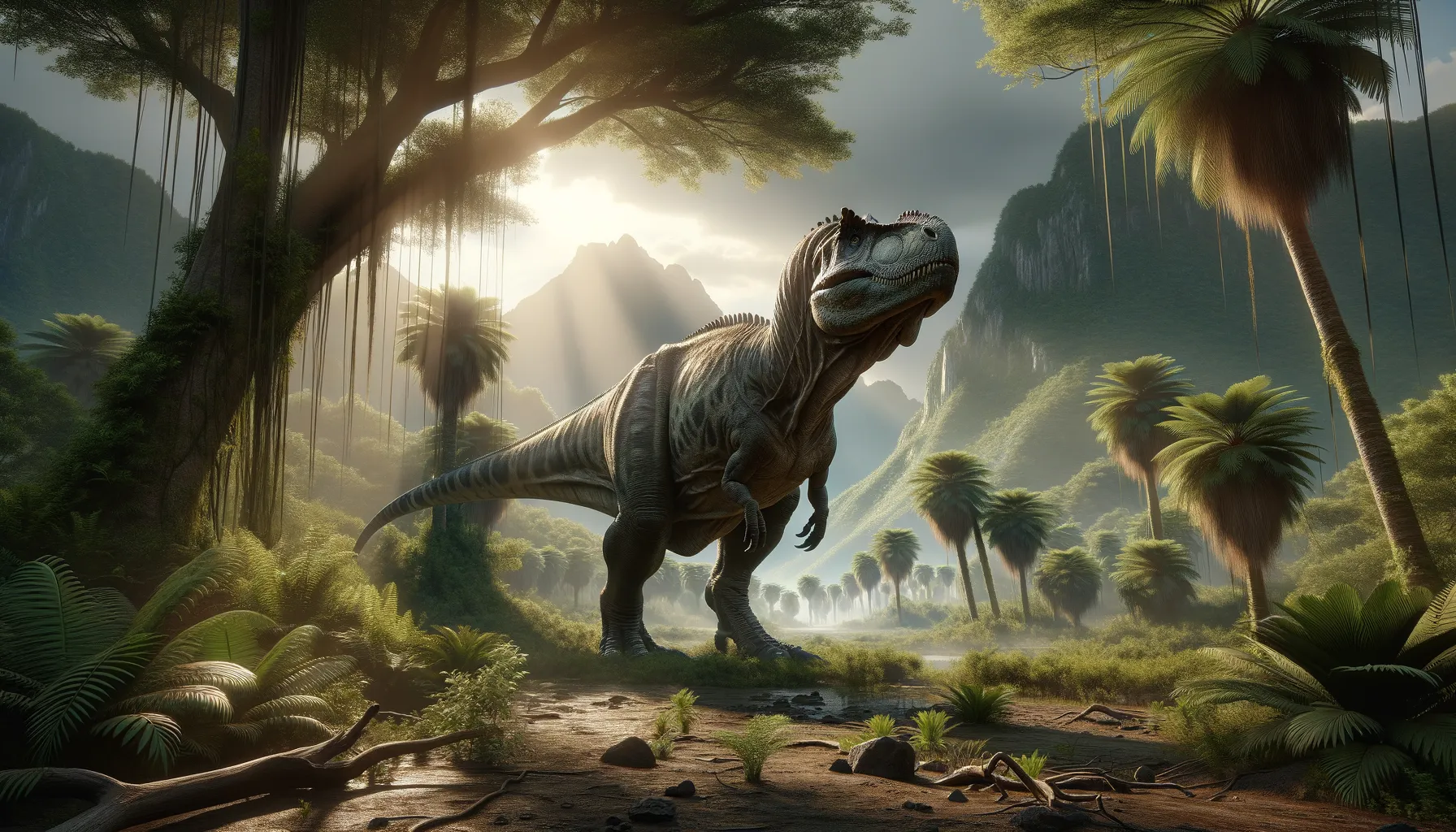
Jiangshanosaurus
A gentle giant of ancient China.
Period
Cretaceous
Length
Roughly 15 meters long.
Height
Around 4 meters tall.
Weight
Approximately 5 tons.
Jiangshanosaurus was a large, plant-eating dinosaur known for its hefty size and slow-moving nature. It roamed the Earth during the late Cretaceous period, primarily in what is now southeastern China. Fossils indicate a robust herbivore that likely moved in groups for protection. Its massive body and long tail helped it to browse high vegetation, while providing defense against predators.
Diet
Jiangshanosaurus was an herbivore, primarily feeding on lush vegetation. Its long neck allowed it to reach leaves and branches high above the ground, while its hefty body could easily push through dense forests.
Hunting
Jiangshanosaurus did not hunt as it was a herbivore. It foraged for plants and used its long neck to reach vegetation. Its size offered protection from many predators, reducing the need for active defense.
Environmental challenges
As a large dinosaur in a changing world, Jiangshanosaurus faced challenges from climate fluctuations and shifting plant resources. Seasonal changes might have affected food availability, requiring migration or adaptation to different plant types. Predation by theropods also posed risks, although its size provided some defense. Competition for resources with other large herbivores was likely, impacting its survival strategies.
Speed
Moderate speeds due to its large size.
Lifespan
Estimated to live several decades.
First discovery
Discovered in Jiangxi Province, China in 2001.
Fun Facts
- Jiangshanosaurus was a sauropod dinosaur, known for its long neck and tail.
- It lived during the Early Cretaceous period, which was around 100 to 145 million years ago.
- The first fossils of Jiangshanosaurus were found in what is now China.
- Jiangshanosaurus is an example of a titanosaur, a group of the largest land animals to ever exist.
- Although big, it was a gentle giant, believed to have been a herbivore feeding on plants.
- Its name, Jiangshanosaurus, is derived from the Jiangshan region in China where it was discovered.
- Despite its massive size, it most likely had to keep moving to find enough food to sustain itself.
Growth and Development
Jiangshanosaurus likely hatched from eggs, facing rapid growth during early years to quickly reach a size less vulnerable to predators. Young might have required special protection or lived in herd nurseries. The dinosaur's development would involve the growth of long vertebrae and robust limbs essential for body support.
Habitat
Jiangshanosaurus inhabited lush, forested regions of Cretaceous China, benefiting from abundant plant life. These areas provided shelter and food, supporting its needs. Seasonal migratory patterns might have been necessary to follow food sources. Water bodies such as rivers and lakes would also attract these herbivores, offering ideal drinking sources.
Interaction with other species
Jiangshanosaurus likely interacted with various herbivores and carnivores. Competition with similar-sized plant-eaters for resources shaped its foraging habits. Predatory dinosaurs posed threats, prompting defensive group behavior. Symbiotic relationships with smaller animals might have occurred, helping with parasite control by birds feeding on insects on its body.
Natural lifespan
Jiangshanosaurus had a natural lifespan that reached several decades.
Reproduction
Reproduction involved laying large eggs, possibly in nests. Parental care levels remain unclear but nesting sites might have been located in safe areas. Group nesting could provide protection through numbers, with some adults guarding against threats.
Social behaviour
Likely lived in herds for mutual protection and social interaction. Group living facilitated offspring survival and migration during food scarcity. Communication through vocalizations or movements might have been used for coordination within the herd. Social hierarchies or roles within groups cannot be certain.
Fossil locations
Fossils were found primarily in Jiangxi Province, China. These discoveries occurred in sedimentary rocks indicative of ancient floodplains. Additional evidence of this genus might exist awaiting discovery in other parts of Asia. The original fossils have added substantial knowledge about Asian sauropods.
